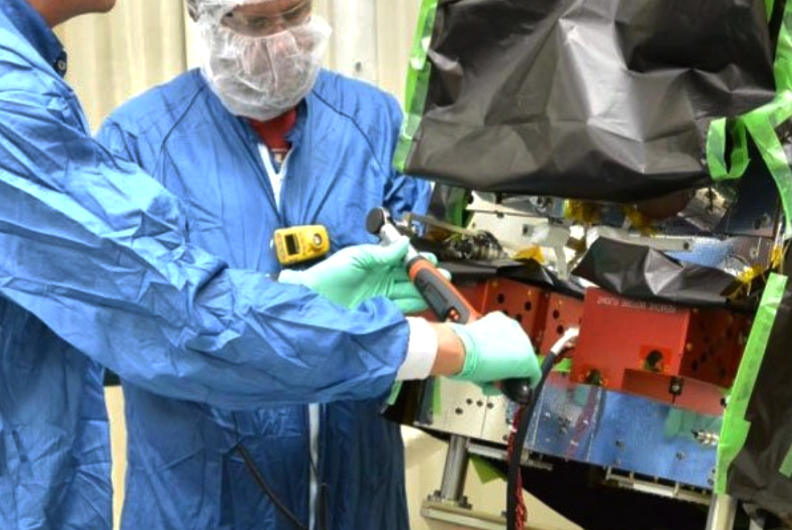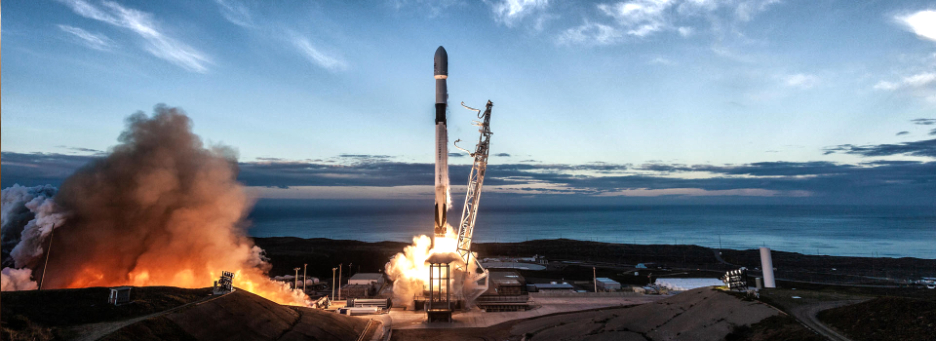
Bradford Space and ECAPS manufacture and deliver the high performance (HPGP) 1N thruster for the firm’s satellite customers’ attitude and orbit control needs.
The company has a large number of these thrusters on order, in production and at the customer. These include:
Preparatory activities for Moog’s first SL-OMV mission out of the United Kingdom with a scheduled delivery of 6 units in Q3, 2020. For more information about this mission, see Small Launch Orbital Maneuvering Vehicle will Enable UK Launched Small Satellite Missions.
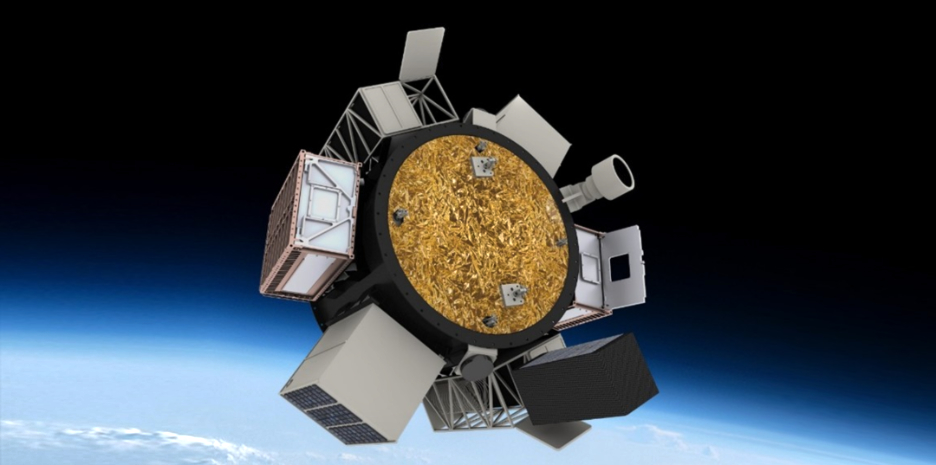
SL-OMV ready to deploy six payloads to their optimal orbits.
Image is courtesy of Moog.
Procurement and manufacturing begun on 100 thrusters for Boeing.
Eight 1N HPGP High Throughput systems for the first Astranis micro-GEO mission. Targeting delivery by Q3 and ready for launch Q1, 2021 this program will feature an innovative combined HPGP / EP system.
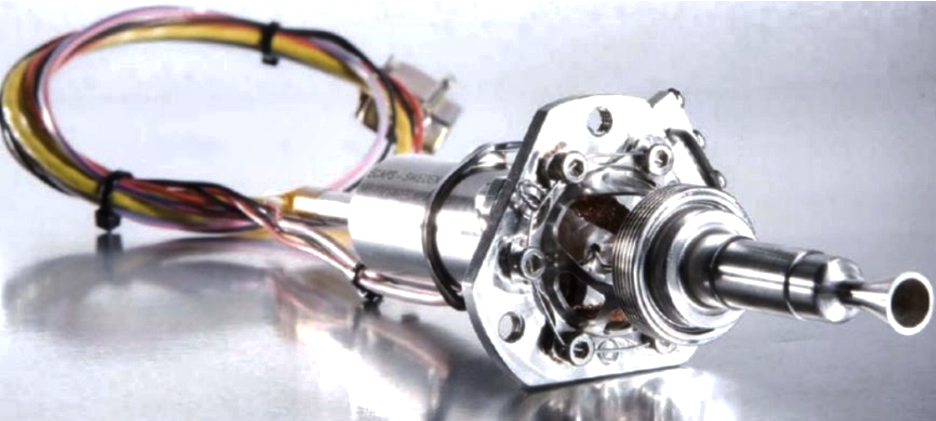
Bradford ECAPS’s 1N HPGP Thruster.
Image is courtesy of the company.
Twelve thrusters delivered to VACCO in Q4 2019 and the latest four have been delivered in March 2020 for use on Millennium Space Systems ALTAIR spacecraft.
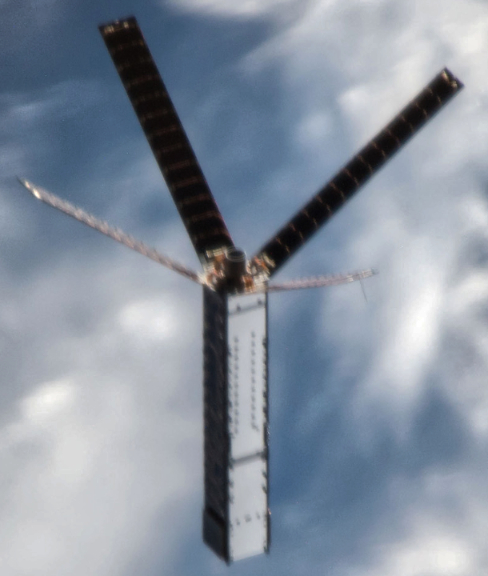
Millennium Space Systems
ALTAIR™ spacecraft.
Image is courtesy of NASA.
Four thrusters delivered to NanoAvionics in early May 2020.
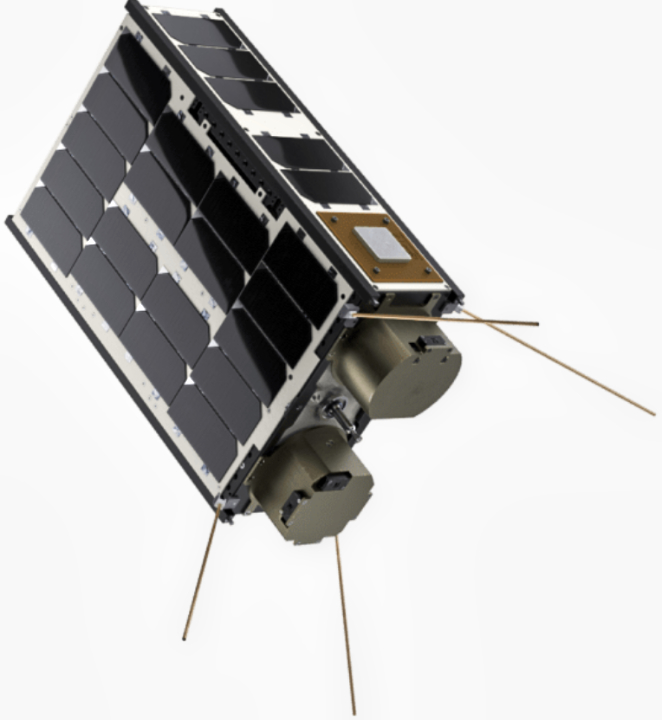
The NanoAvionics smallsat bus.
Image is courtesy of the company.
A double-capacity SkySat-like system is being engineered and built at Bradford Space in the Netherlands for York Space Systems, US, with a scheduled delivery in Q2, 2021.
SkySat Systems Ready for Launch
The Bradford ECAPS propulsion systems for SkySats 16 – 18 are fueled and ready for lift-off at Cape Canaveral Air Force Station USA onboard the SpaceX Falcon 9 Starlink 8 mission. Three other systems, for SkySats 19 – 21, will be launched later this summer on another SpaceX Falcon 9. For more details on this SkySat Block 3 mission go to Planet’s announcement SkySats 16-21 To Launch On SpaceX Falcon 9 Rideshare Missions.
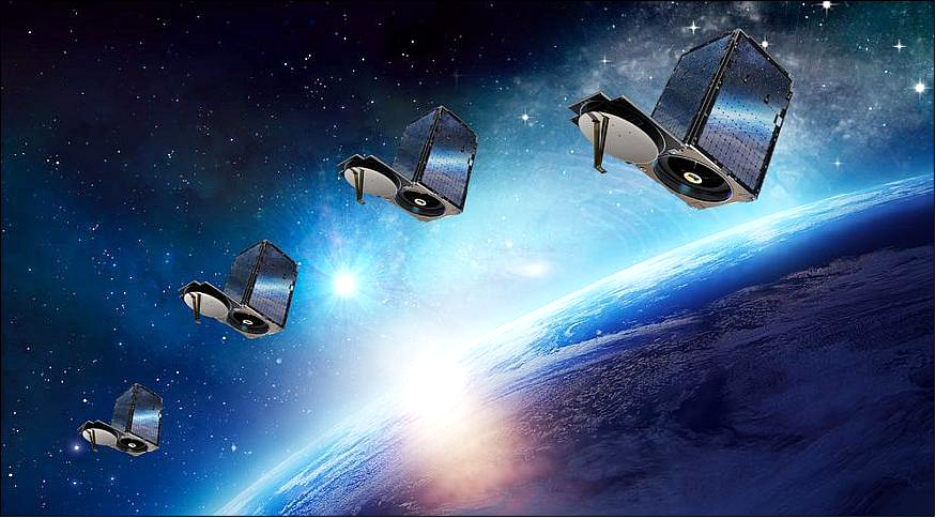
Artistic rendition of Planet’s SkySats on-orbit.
Image is courtesy of the company.
The SkySat propulsion is a highly compact system originally designed by ECAPS for Skybox Imaging, now Planet. The SkySat spacecraft are powered by four 1N HPGP thrusters and ADN propellant, providing the highest performance in the liquid monopropellant market.
To date, 19 propulsion systems have been delivered to Planet of which 13 have been successfully deployed and are operating in orbit. Earlier successful launches in this series are:
- SkySat 3 – Launched in June 2016 from Satish Dhawan Space Centre,
India (Antrix’s PSLV, C-34) - SkySats 4-7 – Launched in September 2016 from Guiana Space Centre, French Guiana (Arianespace’s Vega, 007)
- SkySats 8-13 – Launched in October 2017 from Vandenberg Air Force Base, USA (Orbital ATK’s Minotaur-C, 010)
- SkySats 14-15 – Launched in December 2018 from Vandenberg Air Force Base, USA (SpaceX’s Falcon 9, 064)
Other Upcoming Missions Equipped with ECAPS Thrusters
- The Astroscale ELSA-d, launching in October 2020 (TBC), will have eight 1N HPGP thrusters
- Fueling of the ArgoMoon subsystem, built by VACCO and powered by one ECAPS 100mN thruster with ADN propellant, is scheduled to be “fueled at the factory” at one of the ECAPS facilities in Sweden in Q4, 2020
- One tailored SkySat system, comprising four ECAPS 1N HPGP thrusters on the Blue Canyon Tetra-3 mission for launch in Q1, 2021
5N and 22N HPGP Thruster Development
These larger thrusters, designed for attitude, trajectory and orbit control on small, medium and larger satellites, are in development and almost ready for production. ECAPS is working with NASA’s Goddard Space Flight Center to characterize the performance of each system for use on future NASA observatory and/or interplanetary missions. The 22N is on track to be flight qualified by the end of this year, and the 5N will be fully qualified by early 2021.
